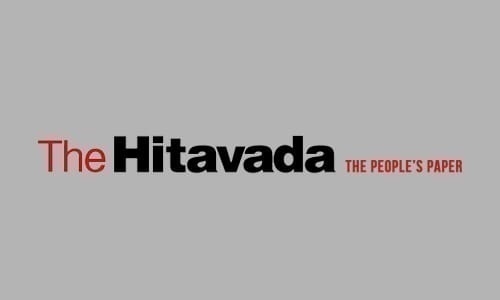DPK Wins S Korean Polls
| Date :26-Apr-2024 |

By Kap Seol
SOUTH Korea’s unpopular Conservative President, Yoon Suk-yeol, and his People Power Party (PPP) suffered a well-deserved defeat on April 10 when voters went to the polls to elect a new National Assembly. The governing party could only manage 108 out of the 300 seats. Yoon now looks set to be a lame-duck President for the remaining three years of his five-year term. The main Opposition was the Democratic Alliance, comprised of the Democratic Party of Korea (DPK) and some smaller allies. They took 176 seats in total, with 169 going to DPK candidates.
From a left-wing perspective, however, the most important thing to note about South Korea’s latest election is that it confirms the established bipartisan hegemony of two rival pro-business parties. Those parties increasingly resemble each other not only in terms of politics and ideology but also in their routine corruption. The Korean left has been unable to challenge this hegemony and is losing ground.
The Justice Party, running in alliance this time with the Greens, failed to win a single seat in the national legislature, having taken six in both 2016 and 2020. In 2020, the combined proportional vote score for the Justice and Green parties was almost 10 per cent; this time, they got a little over 2 per cent between them.
Meanwhile, the Jinbo (“Progressive”) Party — a regrouping from the Unified Progressive Party, which the country’s highest court ordered to be dissolved in 2014 because of alleged links to North Korea — won three seats due to its alliance with the DPK.
In effect, this involved vote swaps between districts where neither party could defeat a conservative rival without the electoral base of the other.
In contrast with the Justice Party, whose working-class base has eroded over the years, the Jinbo Party has a solid presence in the construction and platform labor sectors. However, quite apart from its controversial electoral alignment with a major pro-business party, the party’s left-wing profile remains questionable. It has flirted with hostile sentiment toward migrant workers in these sectors while offering uncritical support for the North Korean national leadership, including its hereditary succession.
Institutionally, both the Justice and Jinbo parties have roots in groups that broke away from the Korean Democratic Labour Party (KDLP), the country’s first mass left party since the Korean War of 1950–53. In 2004, when it elected ten members in the National Assembly with 13 per cent of the proportional vote, the KDLP appeared to be on a path to becoming a full-fledged social democratic party. This was happening in a wider context where the entire country seemed to be moving leftward, at least briefly.
There were nonviolent mass protests that thwarted conservative attempts to impeach a liberal president. The political reverberations of the first national strike by the independent Korean Confederation of Trade Unions in 1996–97 were still palpable.
By the late 2000s, however, the KDLP was heading for a split. It proved to be a marriage of convenience, with one faction vaguely pursuing Western-style social democracy while the other staunchly adhered to nationalist, pro–North Korea views. The party broke up after bitter debates about whether to discipline members involved in a North Korean spy ring that profiled leaders of the party.
The KDLP faced a dilemma about whether to expel these members for voluntarily providing sensitive party information to their North Korean handlers, as they were not convicted under an anti-espionage act but rather under the National Security Law that has been in force since the late 1940s. The party was torn between the need to retain its integrity as an organisation and the imperative of fighting this notorious piece of legislation, which has often been used to suppress political dissent under the pretext of North Korean threats.
Neither of the groups that emerged from KDLP and became respective forerunners of the Justice and Jinbo Parties proved to be a formidable force against the two mainstream parties.
While the conservatives wanted to destroy these groups, the liberals aimed to siphon off their talent and support until they wilted away.
In 2014, the conservative government of Park Geun-hye successfully petitioned the Constitutional Court to outlaw the Unified Progressive Party after the conviction of its leader under the National Security Law. Park was the daughter of former military strongman Park Chung-hee and was impeached for corruption two years later.
Meanwhile, the Justice Party embraced identity politics and middle-class feminism only to experience a series of electoral setbacks, with talented young party cadres being drained away to the DPK. The Jinbo Party at least maintained some political relevance due to shrewd vote swaps with DPK and dedication of party stalwarts who spent years unionising and recruiting new members from the most disfranchised portions of the working class after the legal dissolution of the predecessor group.
Most of South Korea’s citizens view a nuclear-armed, dictatorial but poverty-stricken North Korea as neither a military menace nor a socialist motherland but simply as a disturbing political and economic risk.
In short, over the past four years, South Korea’s legislature, where the DPK possessed a majority, was consumed by endless bipartisan squabbles and finger-wagging from the two main parties, which respectively aimed to keep the leader of the main Opposition party and the first lady out of jail. With a legislature populated by bipartisan loyalists and devoid of a left-wing voice, the next four years are likely to offer more of the same, punctuated by Cho’s and Lee’s attempts at impeachment of Yoon.
The challenge of building a left alternative in South Korea is similar to that faced in so many other countries around the world. The crisis of democracy is the crisis of the Left.
(IPA)
